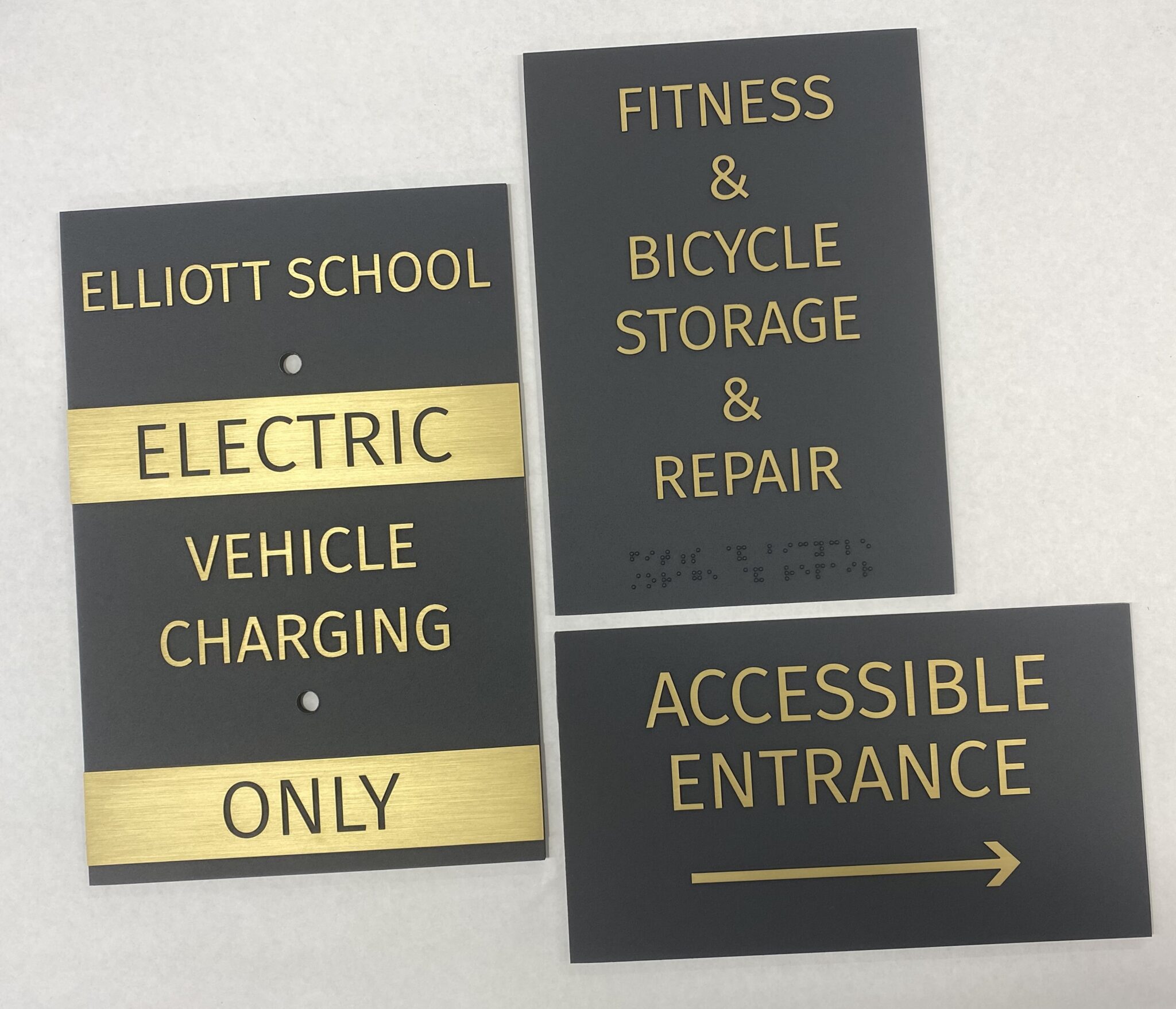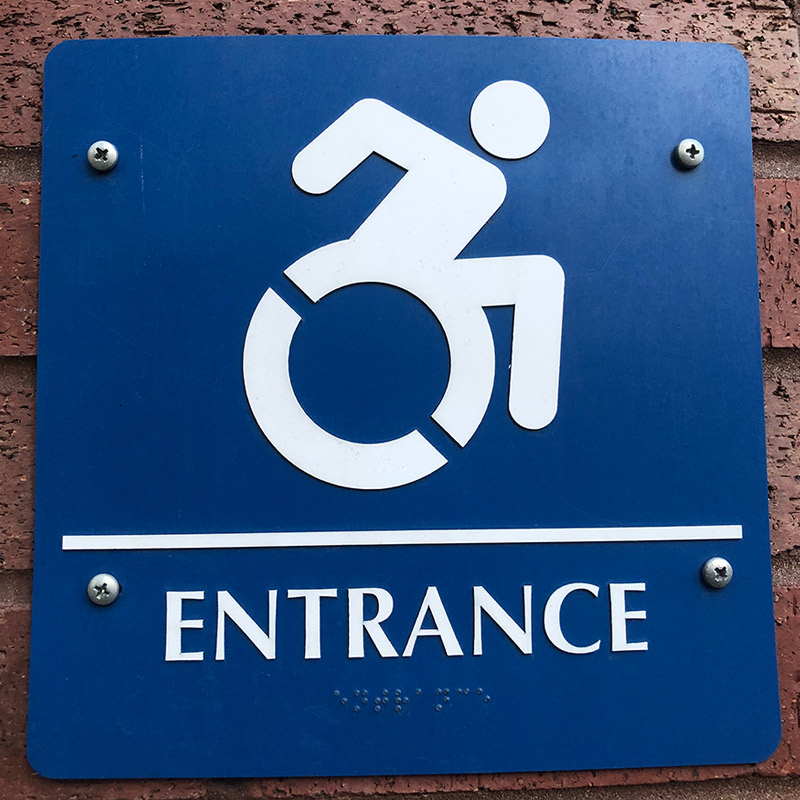Recognizing the Rules Behind ADA Signs
Recognizing the Rules Behind ADA Signs
Blog Article
ADA Signage: Guaranteeing Access and Compliance in Public Spaces
ADA signs plays an indispensable duty in ensuring availability and compliance within public rooms, dramatically contributing to an inclusive setting for people with specials needs. By adhering to ADA requirements, signs not just assists in navigation but also underscores an organization's devotion to variety and equality. As we explore the nuances of ADA signage, from tactile attributes to create ins and outs, it's critical to think about just how these elements coalesce to copyright the civil liberties of all individuals. What are the usual risks companies deal with in maintaining compliance, and how can future patterns in signage continue to drive access forward?
Relevance of ADA Signs
In modern-day culture, the significance of ADA signs prolongs past plain compliance with legal requireds to personify a dedication to inclusivity and access for all individuals. These signs are crucial in creating atmospheres where people with handicaps can navigate public rooms with the very same ease and self-reliance as those without impairments. By giving clear and standardized information, ADA signs ensures that everyone can access centers, services, and information without barriers.
The value of ADA signage exists in its capacity to improve the lifestyle for people with disabilities by advertising equivalent accessibility. It gets rid of the barriers that might otherwise prevent their ability to get involved totally in neighborhood life. Additionally, these signs act as visible signs of a company's commitment to variety and equality, mirroring broader societal values that promote the legal rights and self-respect of all individuals.
In addition, ADA signs plays a vital role in public security. By leading individuals to departures, toilets, and various other vital centers, it makes certain that all people, regardless of physical capacity, can evacuate securely throughout emergencies. In summary, ADA signs is not simply a governing demand yet a powerful tool for promoting a comprehensive and fair culture.
Crucial Element of Conformity

Placement is important; signs should be mounted in locations that are reachable and easily visible. Usually, signage ought to be mounted in between 48 and 60 inches from the ground to make certain accessibility for both standing and mobility device individuals. Tactile elements, such as Braille, are essential for people with aesthetic disabilities, supplying essential details in a non-visual style.
High-contrast colors in between the message and background are necessary to improve readability for individuals with reduced vision. The ADA mandates certain contrast proportions to make sure clearness. Furthermore, character dimension is a crucial consideration, with minimum elevation requirements determined by the viewing range to guarantee readability from various angles.
Layout Considerations for Accessibility
Creating available signs requires a thorough technique to ensure it satisfies the needs of all individuals, particularly those with impairments. This entails thinking about various style components that improve readability and use. Trick factors include the choice of font style, shade comparison, and tactile features. Font styles need to be sans-serif, with clear and basic letterforms, to assist in very easy reading. The size of the message is just as crucial, with ADA standards recommending a minimum height based upon seeing range to make certain legibility.
Contrasting shades in between text and background are vital for exposure, especially for individuals with aesthetic disabilities. A high comparison proportion aids identify the text from its background, improving readability under different illumination conditions. Furthermore, responsive aspects, such as Braille and increased characters, are important for individuals who are blind or have low vision. These aspects must be found at a constant elevation and position to guarantee easy access and comprehension.
Moreover, the placement of signage plays a significant duty in accessibility. Signs need to be set up in places that are easily obtainable and unhampered. Guaranteeing that signage is placed at suitable heights and angles makes it possible for all individuals, including those using mobility devices, to engage with them efficiently.
Usual Blunders to Prevent

An additional widespread mistake is the incorrect positioning of signage. ADA guidelines define exact height and location demands to make sure that indications are obtainable and quickly visible by all people, consisting of those making use of mobility devices. Disregarding these standards not only hinders availability however likewise runs the risk of non-compliance with legal criteria.
Furthermore, inadequate contrast between message and history is a regular oversight. Sufficient contrast is essential for readability, specifically for people with reduced vision. Developers often pick shades that are aesthetically attractive yet lack the needed comparison, making the message difficult to discern.
Lastly, some designers fall short to integrate responsive elements, such as hop over to these guys Braille, which are important for people who are blind. Leaving out these features not only leads to non-compliance with ADA guidelines yet additionally limits accessibility for a section of the population that counts on responsive information.
Future Trends in Signage
Improvements in modern technology and raising awareness of inclusivity are shaping the future trends in signs layout. As culture comes to be extra aware of diverse demands, the assimilation of clever modern technologies right into signs is getting grip. Digital signage, for example, is advancing to consist of real-time updates and interactive functions, which can be vital in giving vibrant information Full Article in public spaces. These indicators usually include touch displays or gesture-based controls, allowing users to browse content tailored to their certain needs.
One more emerging trend is the use of augmented reality (AR) to enhance customer experience. AR-enabled signage can overlay electronic information onto the physical atmosphere, providing aesthetically impaired people with auditory or haptic feedback. ADA Signs. This innovation not just improves access however also produces an engaging experience for all individuals
Sustainability is additionally a significant aspect affecting signage patterns. Environment-friendly materials and energy-efficient illumination remedies are being prioritized to align with worldwide ecological goals. Improvements in products science are leading to the advancement of even more sturdy and weather-resistant indications.
Final Thought
ADA signs plays an essential function in ensuring ease of access and compliance within public spaces by integrating tactile aspects, high-contrast colors, and calculated positioning. The adherence to ADA criteria not only facilitates safe navigation for individuals with disabilities but also represents an organization's commitment to diversity and inclusivity. By avoiding common mistakes and embracing future trends, public rooms can continue to progress these values, guaranteeing that the legal rights and dignity of all individuals are valued and promoted.
ADA signs plays an indispensable role in guaranteeing accessibility and conformity within public areas, substantially contributing to an inclusive setting for people with specials needs. As we check out the nuances of ADA signs, from responsive features to design intricacies, it's critical to take into consideration exactly how these components integrate to support the rights of all customers.In contemporary society, the value of ADA signage extends past simple compliance with lawful mandates to personify a dedication to inclusivity and access for all individuals. By giving clear and standardized information, ADA signs ensures that every person can access facilities, solutions, and info without barriers.
ADA signage plays an important role in assuring availability and compliance within public areas by incorporating responsive elements, high-contrast shades, and tactical positioning. (ADA Signs)
Report this page